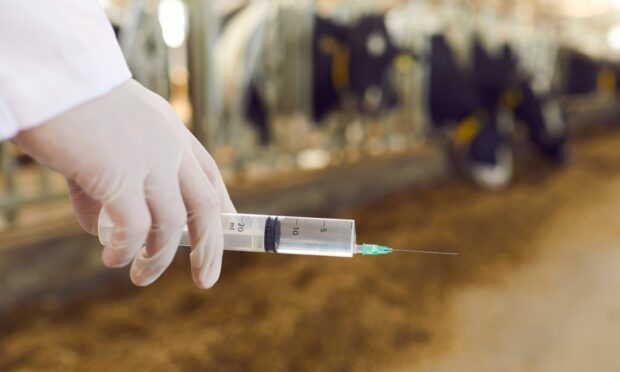A Scottish development to enable farmers to record their anti-microbial use is being pursued by Quality Meat Scotland (QMS) in a move described as being positive for farm animal health and welfare, as well as making good business sense.
Its planned that the QMS solution will allow Scottish farmers to feed data into a new Medicine Hub, set up and run in England and Wales by the Agricultural and Horticultural Development Board (AHDB).
Operating as an online tool to help dairy, beef and sheep producers monitor and compare medicine use, the AHDB Hub is designed to help the farming industry tackle the threat of antimicrobial resistance as it applies to livestock production.
“We are leading on this development in Scotland with the support of ScotEID (the Scottish livestock traceability body) and are aiming to capitalise on existing data to maximise value to Scottish producers,” said Bruce McConachie, head of industry development at QMS.
The existing Hub provides a ‘safe, secure and independent central repository to collate, report and compare antibiotic use at individual farm level’, according to AHDB, who say the sharing of medicine use data by farmers will help prove the UK industry’s credentials to the public, the supply chain and to competitors and customers around the world.
Antibiotics on farms ‘should be used appropriately’
“Producers in the UK adhere to some of the most rigorous and robust production standards, and work hard to achieve high levels of health and welfare as well as low antibiotic use, something the industry is rightly proud of,” said vet Mandy Nevel, head of animal health and welfare at AHDB.
“Even though individual farms must record medicine use, until now there has been no central online resource for doing so at a national level, something that is set to change. And it’s worth noting that, even if you have used no antibiotics in the last calendar year, this information is important to capture.”
We need to understand what is being used and at what rate and in which categories of animal.
Revealing she is often asked by farmers about the data, who gets to see it and where it is shared, Ms Nevel added that all such data always belongs to the farmer.
“Producers can give permission to the vet or any other holder of data to upload it on their behalf,” she said.
“At all times, however, the farmer remains in control of who can and cannot see their data, with the Hub only ever publishing anonymised data.
“While antibiotics have a role in managing the health of animals, of course, they should be used appropriately. We need to understand what is being used and at what rate and in which categories of animal. Medicine Hub will provide this facility.”
UK vets, together with farmers, follow ambitious targets for antibiotic use, as adopted and monitored by the RUMA (Responsible Use of Antibiotics in Agriculture alliance) Targets Task Force.

Conversation